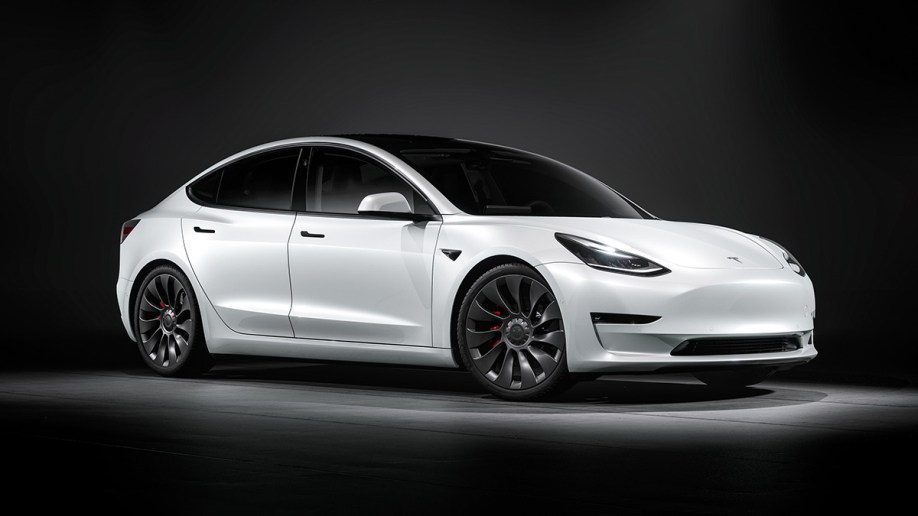
In a tweet late last week, CEO Elon Musk said the system “is now available to anyone in North America who requests it from the car screen, assuming you have bought this option.”
The Most Extensive of Tesla’s Three Systems
Full Self-Driving is the most extensive and expensive of the three driver assistance programs Tesla offers. The company offers three levels of driver assistance software:
Autopilot is standard on all Teslas, though it has sometimes been an added-cost option. It includes an intelligent cruise control that matches the car to the speed of the surrounding traffic. A lane-centering function helps keep the vehicle in the center of its lane.
Enhanced Autopilot came back earlier this year after several years of absence from the market. A $6,000 option, it adds navigating highway on- and off-ramps and interchanges on top of what Autopilot can do. It also adds a self-parking system and includes a “summon” function that lets owners call the car to them at parking lot speed from nearby.
Full Self-Driving is now a $15,000 option. Tesla says it will read and react to traffic lights and stop signs and steer around some turns with the driver’s “active supervision.”
Tesla says Full Self-Driving is in “beta testing” and requires owners to sign a complex waiver to engage it.
The term “test” would seem to suggest some sort of laboratory conditions or controlled experiment with close monitoring. But that’s not how Tesla is testing the software. Instead, it’s allowing owners to use it on public roads with the rest of us as if it were a finished product.
Industry Standards Developing
The auto industry has standardized on a five-level framework from SAE International, a global association of engineers and related technical experts in the aerospace, automotive, and commercial-vehicle industries, to describe self-driving systems.
At Level 1, a car can briefly intervene to assist a driver with their hands still on the steering wheel. Lane-centering systems that help you stay in the center of your lane, for instance, are a Level 1 technology.
At Level 2, cars have more than one Level 1 system, and they can work simultaneously. Many cars pair an adaptive cruise control system that can keep a set distance from the car ahead with a lane-centering system.
As the ladder progresses toward level 5, the car’s systems take more responsibility for driving. A Level 5 system – still theoretical – would not require a steering wheel or pedals.
Tesla lawyers have told government regulators Full Self-Driving is a Level 2 system and “will continue to be an SAE Level 2, advanced driver assistance feature.”
Controversies and Investigations
However, regulators at the state and federal levels have objected to the company’s advertising for the system.
California’s Department of Motor Vehicles has accused Tesla of false advertising over the name “Full Self-Driving.” A court has not yet ruled on the charge.
The federal government, meanwhile, may be conducting several probes of Tesla’s purported automation software. A Reuters report in October claimed that the Department of Justice is conducting up to three separate probes of the matter. At least one, Reuters says, could result in criminal charges.
Federal law requires automakers to report crashes that may have involved driver assistance systems to the government. As of June, the National Highway Traffic Safety Administration reported it had received 392 reports. Nearly 70% of them – 273 crashes – involved Tesla’s systems.
Jennifer Homendy, chair of the National Transportation Safety Board, told Bloomberg in April, “We essentially have the Wild West on our roads right now. It is a disaster waiting to happen.”
Controversy Over Names
Auto safety watchdog groups have increased scrutiny of purported automation systems in recent years.
The Insurance Institute for Highway Safety plans to begin rating the systems next year. Meanwhile, a coalition of safety groups has come together to ask the auto industry to adopt standard names for partial automation systems, claiming that names like “Full Self-Driving” can cause drivers to trust the systems to do more than they’re designed to.
There’s evidence that people over-rely on these driver assistance systems. A recent study by the Insurance Institute for Highway Safety, for instance, recently found that 42% of Tesla Autopilot users and 54% of users of GM’s Super Cruise software “said that they were comfortable treating their vehicles as fully self-driving.”
Only Allowed in North America
Tesla made the move in the U.S. but is not selling the system overseas.
“In the U.S., things are legal by default,” Musk told investors in a presentation last spring. “In Europe, they’re illegal by default. So, we have to get approval beforehand. Whereas, in the U.S., you can kind of do it on your own cognizance, more or less.”







